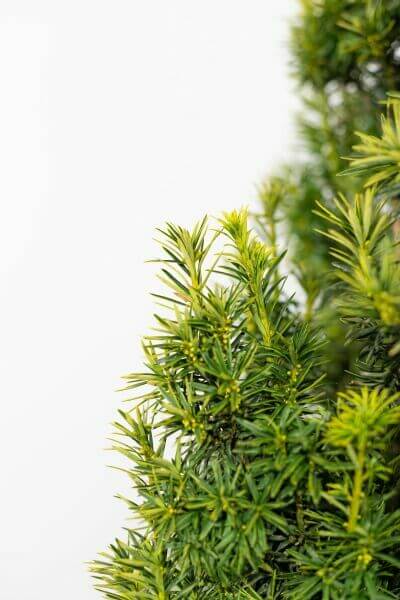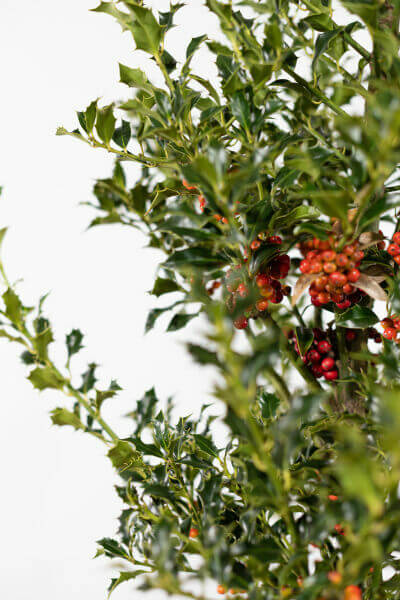Best Hedging Plants For Smooth Trimming
Best Hedging Plants For Smooth Trimming
Blog Article
Best Hedging Plants For Public Spaces
Improve your garden's attraction with lavish hedge varieties such as Yew (Taxus), Thuja, Laurel, Photinia, and Bamboo, celebrated for their structural integrity and environmental advantages.
Yew and Thuja provide evergreen protection and winter durability, while Laurel uses fast growth and broad, aromatic leaves.
Photinia adds seasonal charm with its lively red foliage, and Bamboo lends a low-maintenance, serene ambiance.
These hedges enhance air quality, minimize sound, and develop tranquil, private areas.
Proper planting, spacing, and maintenance make sure energetic growth and ecological consistency.
Explore how these lavish varieties can elevate your garden's appeal and well-being.
Key Takeaways
Change Your Garden With Lush Hedge Ranges
- Select Yew for its thick, evergreen growth and unrivaled durability.
- Choose Laurel for its quick growth and broad leaves, ensuring fast privacy.
- Choose Photinia for its lively seasonal foliage, which turns a striking dark red.
- Utilize Bamboo for a low-maintenance, winter-hardy hedge with aesthetic appeal.
- Area plants 2-3 per meter and prune frequently for ideal growth and health.
Popular Hedge Plants
When changing a garden with rich hedge ranges, it's important to consider popular hedge plants such as Yew, Thuja, Laurel, and Photinia due to their unique attributes and advantages.
Yew (Taxus) is highly esteemed for its longevity and dense, green development, making it a prime choice for sustaining landscapes.
Thuja is noted for its evergreen foliage and robust winter season durability.
Photinia adds seasonal vibrancy with red leaves that darken in time, developing vibrant visual appeal.
Laurel offers rapid development and aromatic, broad leaves, perfect for fast personal privacy.
Additionally, Bamboo is an outstanding option for ambiance, providing a low-maintenance, winter-hardy choice that boosts the garden's aesthetic with its stylish, swaying walking sticks.
These choices deal with a variety of horticultural needs and preferences.
Benefits of Garden Hedges
Garden hedges offer a multitude of benefits, making them a valuable addition to any landscape. These natural barriers are affordable to implement and supply considerable wind security, improving air circulation and adding to sound reduction. The dense foliage of hedges like Thuja and Beech ensures personal privacy by obstructing exposure, producing a peaceful and secluded environment.
Hedges also play a crucial function in microclimate regulation, supplying a steady environment that fosters plant development and lessens temperature level fluctuations. Their elaborate leaf structures filter contaminants, enhancing air quality and adding to a healthier garden environment.
Furthermore, hedges master noise decrease, taking in and deflecting sound waves to lower ambient sound levels. This dual performance of offering both acoustic and visual privacy boosts the general harmony and aesthetic appeal of any garden.
Planting and Maintenance Tips
For a successful hedge, meticulous preparation of the planting area is crucial. Make sure the soil has appropriate pH and drain to support strong root development.
Space the plants properly for the chosen species. Water the hedge frequently throughout its preliminary development phase, adjusting as required with seasonal modifications.
Implement a organized insect control and illness prevention technique, utilizing chemical or organic treatments when needed. Frequently inspect for aphids, termites, and fungal infections.
Apply mulch to maintain wetness and suppress weeds. Seasonal pruning promotes dense growth and air flow, vital for plant health.
Following these standards will assist you cultivate a lively, well-kept hedge that improves the charm of your garden.
Spacing and Cutting Standards
Spacing and Cutting Standards
Correct spacing and cutting are essential for cultivating healthy, aesthetically appealing hedges. Appropriate spacing ensures each plant receives sufficient nutrients, light, and airflow.
Follow these standards for ideal hedge upkeep:
- Spacing: Position hedge plants 2-3 plants per meter to motivate robust growth.
- Pruning Strategies: Regular pruning is essential for keeping preferred hedge height and shape. Trim brand-new development in summer season and cut back older wood throughout winter.
- Seasonal Care: Change trimming schedules and approaches according to seasonal requirements to ensure plant health.
- Hedge Height: Routinely monitor and trim to preserve the desired hedge height and attain uniform aesthetics.
Sticking to these steps will ensure your hedge prospers, improving both the appeal and functionality of your garden.
Choosing the Right Hedge
Picking the Right Hedge
Choosing the appropriate hedge involves examining elements such as mature height, foliage density, and ecological durability. Successful hedge plant selection needs understanding each species' development qualities and site-specific versatility.
For instance, Yew (Taxus) uses exceptional longevity and dense development, while Thuja is notable for its winter season durability. Additionally, thinking about maintenance requirements is vital; fast-growing species like Laurel or Privet need regular cutting, whereas low-maintenance choices like Bamboo or Ivy may be more suitable for those seeking minimal maintenance.
Environmental elements such as soil type, light availability, and moisture conditions should likewise guide the selection procedure. This careful technique guarantees the picked hedges will flourish, supplying both practical and aesthetic benefits to the garden landscape.
Shipment and Planting Suggestions
To guarantee your hedge plants prosper, they need to be provided by specialized couriers and planted quickly upon arrival.
Follow these necessary actions for successful planting:
- Soil Preparation: Enrich the soil with natural matter to improve drainage and nutrient material.
- Planting Depth: Develop a trench two times the width and equal to the depth of the root ball.
- Watering Methods: Water completely after planting, keeping the soil regularly moist but not saturated.
- Mulching: Apply a layer of mulch to keep wetness and reduce weeds.
Customer Support and Service
Provided the important function of prompt assistance in horticultural pursuits, our customer support team is offered 6 days a week through telephone, e-mail, and social networks to use professional suggestions and swiftly address any concerns. Their devotion to quick action times ensures customer satisfaction by resolving inquiries related to plant health, ideal planting methods, and maintenance schedules.

Telephone
6 days a week
Within 24 hours
This extensive assistance system, strengthened by an outstanding 9.3/ 10 consumer ranking, highlights our dedication to boosting the gardening experience for every customer.
Often Asked Concerns
How Long Does It Take for Hedge Plants to Establish?
Hedge plants typically require one to three years to become fully established, with the specific period differing by types and growing conditions.
Reliable care throughout this important duration is important for robust development. Constant watering, vigilant weed control, and proper fertilizer application are critical in promoting strong root development.
For example, fast-growing species like Laurel might develop faster, while slower-growing varieties such as Yew may take longer. Thorough upkeep accelerates the facility procedure, resulting in thick and healthy hedges.
What Are the Best Hedge Plants for Personal Privacy?
The concern of the very best hedge plants for privacy involves examining evergreen and deciduous choices.
Evergreen hedges like Thuja, Laurel, and Cypress offer year-round protection, guaranteeing constant personal privacy.
In contrast, deciduous hedges such as Beech provide seasonal personal privacy, shedding leaves in colder months.
Key maintenance ideas for personal privacy hedges consist of regular cutting, fertilizing in spring, and appropriate spacing-- typically 2 to 3 plants per meter.
In addition, consistent watering and persistent weed elimination are essential for promoting healthy, dense growth.
Can Hedge Plants Bring In Wildlife to My Garden?
Yes, hedge website plants can draw in wildlife to your garden by offering essential benefits like shelter, food, and nesting sites, thereby improving regional biodiversity. Yew, holly, and laurel are excellent for bring in birds, while ivy supports a variety of pests.
However, it is necessary to keep in mind that there are some downsides, such as increased upkeep to manage insects and routine upkeep. Carefully choosing and preserving hedge varieties can help balance these downsides and benefits, ultimately promoting a vibrant and sustainable community in your garden.
Are There Any Flowering Hedge Plants Available?
Yes, there are flowering hedge plants offered that can improve the appeal of your garden.
For example, Elaeagnus, also called Olive Willow, produces fragrant white flowers in the fall, including a touch of elegance.
Photinia, another popular choice, showcases vibrant red leaves that mature into an abundant green, creating a vibrant visual result throughout the seasons.
To ensure these plants grow, it's important to practice proper pruning methods and seasonal maintenance, such as cutting brand-new development in the summertime and cutting down in the winter.
These procedures will help keep the health and visual appeal of your flowering hedges.
How Do I Prevent Insects in My Hedge Plants?
To prevent pests in hedge plants, utilize natural pest control methods and keep proper hedge care. Introduce helpful bugs like ladybugs, which prey on damaging insects, to produce a well balanced ecosystem.
Routinely inspect your hedges for indications of infestation and quickly eliminate any affected parts to avoid the spread. Guarantee the health of your hedges by using well balanced fertilizers and offering appropriate water.
Use mulching to retain soil wetness and correct spacing to lower plant tension and promote robust development. These practices jointly help in reducing pest concerns and keeping a healthy hedge.
Conclusion
In essence, picking the best hedge varieties such as Yew, Thuja, and Laurel can change any garden into a peaceful sanctuary. These plants offer year-round plant, boost aesthetic appeal, and offer practical advantages like sound decrease and wind defense.
Appropriate planting techniques, precise spacing, constant watering, and seasonal trimming are vital for optimum growth.
Trustworthy delivery services and skilled client support make sure a seamless experience from purchase to planting, making it easier than ever to elevate your outside space.
Garden hedges provide a multitude of advantages, making them an important addition to any landscape. These natural barriers are affordable to carry out and offer significant wind defense, enhancing air blood circulation and contributing to noise decrease. The dense foliage of hedges like Thuja and Beech guarantees privacy by obstructing presence, producing a remote and serene environment.

Pruning Techniques: Routine pruning is necessary for preserving desired hedge height and shape. Cut brand-new growth in summer and cut back older wood throughout winter.
Report this page